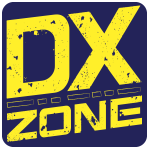CQ WPX Contest Dates
CW: May 30 – 31, 2020
0000 UTC Saturday — 2359 UTC Sunday
[SSB is always the last full weekend of March, CW is always the last full weekend of May]
Contest Rules
I. Objective:
For amateurs world wide to contact as many amateurs and prefixes as possible during the contest period.
I. Period of Operation:
48 hours. Single Operator stations may operate 36 of the 48 hours – off times must be a minimum of 60 minutes during which no QSO is logged. Multi-operator stations may operate the full 48 hours.
III. Bands:
Only the 1.8, 3.5, 7, 14, 21, and 28 MHz bands may be used. Observance of established band plans is strongly encouraged.
IV. EXCHANGE:
RS(T) report plus a progressive contact serial number starting with 001 for the first contact. Note: Multi-Two and Multi-Unlimited entrants use separate serial number sequences on each band.
V. SCORING:
A. Score: The final score is the result of the total QSO points multiplied by the number of different prefixes worked.
B. QSO Points: A station may be worked once on each band for QSO point credit:
1. Contacts between stations on different continents are worth three (3) points on 28, 21, and 14 MHz and six (6) points on 7, 3.5, and 1.8 MHz.
2. Contacts between stations on the same continent, but different countries, are worth one (1) point on 28, 21, and 14 MHz and two (2) points on 7, 3.5, and 1.8 MHz. Exception: For North American stations only—contacts between stations within the North American boundaries (both stations must be located in North America) are worth two (2) points on 28, 21, and 14 MHz and four (4) points on 7, 3.5, and 1.8 MHz.
3. Contacts between stations in the same country are worth 1 point regardless of band.
C. Prefix Multipliers: The prefix multiplier is the number of valid prefixes worked. Each PREFIX is counted only once regardless of the band or number of times the same prefix is worked.
1. A PREFIX is the letter/numeral combination which forms the first part of the amateur call. Examples: N8, W8, WD8, HG1, HG19, KC2, OE2, OE25, LY1000, etc. Any difference in the numbering, lettering, or order of same shall count as a separate prefix. A station operating from a DXCC entity different from that indicated by its call sign is required to sign portable. The portable prefix must be an authorized prefix of the country/call area of operation. In cases of portable operation, the portable designator will then become the prefix. Example: N8BJQ operating from Wake Island would sign N8BJQ/KH9 or N8BJQ/NH9. KH6XXX operating from Ohio must use an authorized prefix for the U.S. 8th district (/W8, /AD8, etc.). Portable designators without numbers will be assigned a zero (Ø) after the second letter of the portable designator to form the prefix. Example: PA/N8BJQ would become PAØ. All calls without numbers will be assigned a zero (Ø) after the first two letters to form the prefix. Example: XEFTJW would count as XEØ. Maritime mobile, mobile, /A, /E, /J, /P, or other license class identifiers do not count as prefixes.
2. Special event, commemorative, and other unique prefix stations are encouraged to participate. Prefixes must be issued or permitted by the licensing authority of the country of operation.
VI. ENTRY CATEGORIES:
A. Single Operator Categories:One person (the operator) performs all operating and logging functions. There is no limit on band changes. Only one transmitted signal is permitted at any time.
1. Single Operator: QSO alerting assistance of any kind is prohibited (see rule IX.2).
a. High Power (All Band or Single Band):Total output power must not exceed 1500 watts.
b. Low Power (All Band or Single Band): Total output power must not exceed 100 watts.
c. QRP (All Band or Single Band): Total output power must not exceed 5 watts.
2. Single Operator Assisted: Entrants in this category may use QSO alerting assistance (see rule IX.2).
a. High Power Assisted (All Band or Single Band): Total output power must not exceed 1500 watts.
b. Low Power Assisted (All Band or Single Band): Total output power must not exceed 100 watts.
c. QRP Assisted (All Band or Single Band): Total output power must not exceed 5 watts.
B. Single Operator Overlay Categories: Single Operator entrants may also submit their log for one of the categories shown below by adding an additional line in the Cabrillo log file header called CATEGORY-OVERLAY. All Overlay entries are grouped into high power and low power in the results.
1. Tribander/Single Element (TB-WIRES): During the contest an entrant shall use only one (1) tribander (any type, with a single feed line from the transmitter to the antenna) for 10, 15, and 20 meters and single-element antennas on 40, 80, and 160 meters. Separate receiving antennas are not permitted in this category.
2. Rookie (ROOKIE): To enter this category the operator must have been licensed as a radio amateur three (3) years or less on the date of the contest. The date the operator was first licensed must be indicated in the SOAPBOX field. An operator who has won a plaque in any previously published CQ contest is not eligible for the Rookie category.
3. Classic Operator (CLASSIC): The entrant will use only one radio, no QSO finding assistance, and the one radio must not be able to receive while transmitting. Operator Assisted entries are not eligible for this category.
C. Multi-Operator Categories (All Band only): More than one person can contribute to the final score during the official contest period. Select category based on number of transmitted signals.
Contest Software
A curation of contest programs taken from our Contest Software links page










